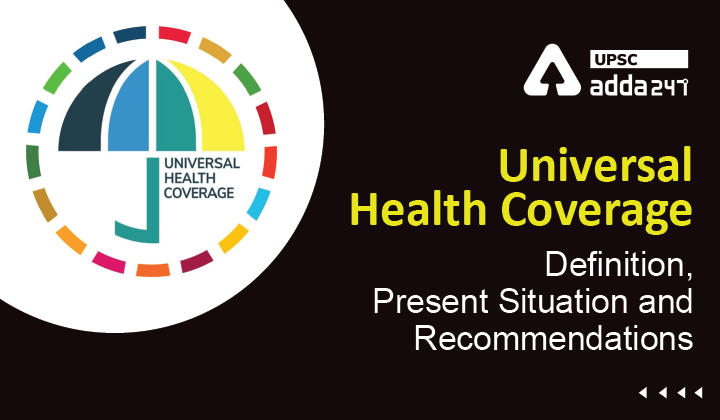Table of Contents
What is universal health coverage?
- Health is a vital public good and basic human right.
- WHO definition: Universal Health Coverage means ensuring that everyone, everywhere can access essential quality health services without facing financial hardship.
सार्वभौमिक स्वास्थ्य कवरेज: परिभाषा, वर्तमान स्थिति एवं सिफारिशें
Health sector in India: Present Situation
- India spends around 1% of GDP on health.
- Sri Lanka, Bangladesh and Bhutan perform better in various health indicators.
- The budgetary allocation of Ayushman Bharat is also far low from the par level. Moreover, the scheme is for the financially weaker section, the middle class is still at risk.
- The commitment of govt to spend 2.5% of GDP as envisaged under National Health Mission is yet to be implemented.
- Only one fifth of the hospitals are in rural areas. Also, doctors are in the ratio of 3.8:1 (urban:rural).
- India’s ranking in Human Development Index remained constant—131 position 2020 among 185 countries—in last 4 yrs.
- According to the Ministry of Health and Family Welfare, more than 57% of doctors are not qualified.
Health sector India: Recommendations
- Need for comprehensive health care model. Issues like Gorakhpur incident, Delhi pollution, Punjab narcotic crises should not be dealt in isolation.
- Promote health literacy among the masses. Even WHO calls to promote it.
- Investment in health sector gives huge return in the future in the form of human capital.
- Need for a centralised health agency to coordinate with multiple departments.
- Japan’s experience in providing the UHC (Universal Health Coverage) to its people can help India.
- Japan established research and control centre on diarrhoea in Kolkata.
- Cooperated in strengthening urban health cooperation in Tamil Nadu.
- Japan worked with India in eradicating polio. In return, Japan could take help in the areas like Ayurveda.
- Regulation needed in the way the prices of drugs are set. More focus should be given to generic drugs.
- Need to renew code of medical ethics.
- Need to reduce price of various medical equipment and normalise GST rates for medicines.
- Need to promote e-pharmacy to bring competition in the market, with regulation.
- The brick-and-mortar model of medicine selling (medical shops) led to cartelisation and thus affected the competition in the market.
- Need to ensure accessibility, quality, and affordability while promoting digital health.
- WHO recognizes self-care interventions as a means to expand health service.
Health issue in India: Way forward
- Right to timely medical treatment in government hospitals is a Fundamental Rights under Article 21.
- Article 47 under DPSP of Indian Constitution calls for states action to improve public health.
- Ensuring Universal Health Coverage will also contribute significantly n achieving the targets under SDG 3.
Read UPSC favourite topics





 TSPSC Group 1 Question Paper 2024, Downl...
TSPSC Group 1 Question Paper 2024, Downl...
 TSPSC Group 1 Answer key 2024 Out, Downl...
TSPSC Group 1 Answer key 2024 Out, Downl...
 UPSC Prelims 2024 Question Paper, Downlo...
UPSC Prelims 2024 Question Paper, Downlo...




